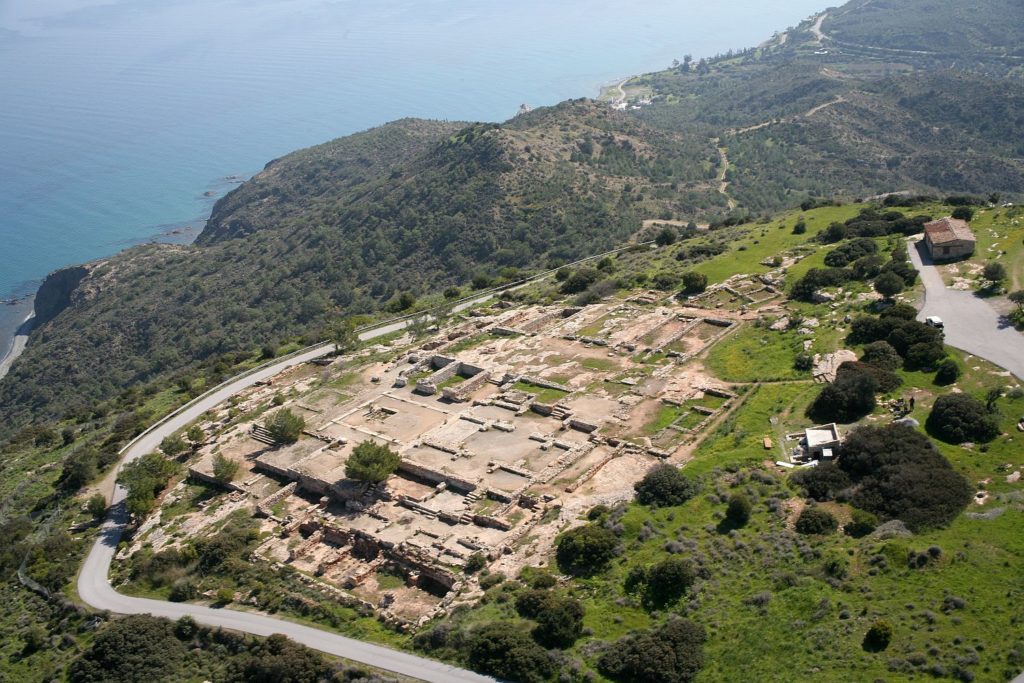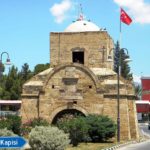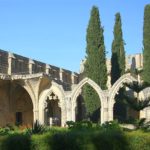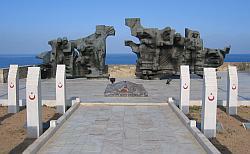
Going west from Kyrenia, there are many places to stop off and explore – and you may be surprised to learn that there are many more than you will usually find in most guidebooks. The further west you travel from Kyrenia you come across many fascinating and historical places that remain a proud testament to an island rich in history.
Starting in Karaoğlanoğlu (pronounced Kara-o-lan-o-loo) is the ‘Şehitleği’ (martyrs’ monument) in a well-kept garden on the coastal side of the main road. This is the resting place of 71 men who died during the intervention of 1974. The Peace and Freedom museum is also located here, featuring tanks and other military vehicles and an indoor exhibit reporting on the intervention of the Turkish military. Further along the main road is the Peace and Freedom monument, a plain concrete structure rising into the air which marks the 1974 landing place.
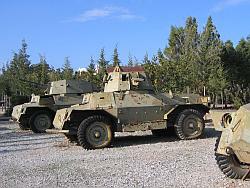
Just below the mountain village of Karaman is a Bronze Age cemetery, and it is signposted on the final bend on the ascent to the village. It’s a small but interesting set of tombs which are believed to date back to around 1900-1800BC, before even the tombs found at Salamis. You can walk around the site and wander in and out of the tombs, which have now long since been ransacked. In the village itself you can also visit the church in the village centre which still retains some icons and paintings from the 19th century.
If you take a walk from Karaman to the east, then you will be able to see two little churches long since emptied, but they still retain enough character to make them interesting enough to walk to, whilst all the time being able to gaze up at St. Hilarion Castle!
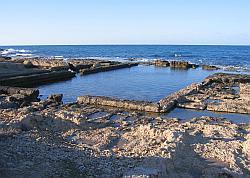
Heading to Alsancak and Lapta are the amazing remains of Lambousa, a city said to be have been founded by Spartan Greeks in the 12th century. Here on the coast (turn right at the sign for Mare Monte) you will find the remains of many tombs cut from the soft rock, as well as large fish tanks again cut from rock – and you can walk right across the headland to see the remains of the original entrance to the city which strangely sits on the eastern end of the Camelot Beach Club!
In Lapta itself you will find many back streets and shops to while away your time in, as well being able to see plenty of churches and monasteries built mostly around the 1800s – they are still in good condition today.
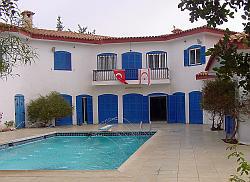
After the village of Karşiyaka you can turn right at the signs for Kayalar and Sadrazamköy which will take you on a scenic coastal route where you will find small coastal buildings, some now abandoned churches and look out posts. Turning inland at the tip of the cape you will come to Koruçam which is definitely worth a stop for a few hours, its main reason for interest being that it is a Greek Maronite village, one of the few remaining in the north of the island with the population being of Orthodox Christian faith. You can also find the little church of Panayia on the outskirts of the town.
Not far from here, towards Camlibel is the interesting Mavi Köşk, a splendid 1950s chateau style house lived in by the notorious gun smuggler Paulo Paolides. The gardens have some great views over the surrounding land for miles around, and there are some interesting anecdotes to read as you explore the house and gardens. In Camlibel itself there is the remains of the Monastery of Ayios Pandeleimon, who was the patron saint of physicians, and also a Bronze Age settlement featuring a pillar and alter which have been reconstructed.

Following the coastal route to Akdeniz and just beyond, you will find an ancient temple site called Paleokastro. Found in 1929 but no longer here, having been carted off by excavators, were the remains of around 2,000 terracotta statues in various shapes and sizes believed to have originated in the 6th to 7th century.
On the drive through to Güzelyurt you will also the find the Geçitköy reservoir where you can take a break and while away some time taking in the views and perhaps watching some of the birds which come to drink there. Güzelyurt itself is a bustling town and there is the Nature and Ecology museum to spend an hour or two at, interesting finds here include some stuffed animal oddities and archaeological finds dating back to the Neolithic period.
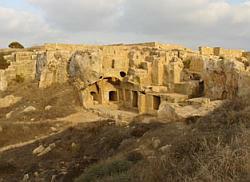
Next to the museum is the equally interesting Ayios Mamas monastery which is in very good condition and remains pretty much unchanged as a Greek Orthodox Church, and there are not many of those around these days. St Mamas was the patron saint of tax evaders, having been arrested for not paying taxes as he thought it unfair that a hermit such as himself should pay them, he became a saint after having calmed a lion on the way to see his accuser, the local Byzantine duke, who was so impressed by this bravery that he exempted Mamas from taxation forever more!
A whole day visiting Lefke, a town which has always been Turkish, would hopefully be enough time to spend hours exploring the surrounding ancient sites of Vouni and Soli, both breathtaking in their own right with much to see and explore. Also along the coast at Gemikonağyı you may perhaps find the remains and devastation left by the CMC mining factory – a place of interest, albeit a sad one, with the coastline still suffering the effects of copper waste and slag.
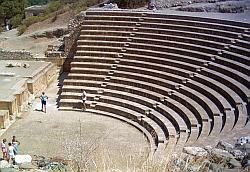
That winds up our review of the places of interest to the west of Kyrenia. There are many more that you may find along your travels, so please do let us know if you think something deserves a mention! Please click any of the links within the article to find out more about a particular item, or visit other articles detailing the castles in North Cyprus, places of interest in Kyrenia, to the east of Kyrenia, Lefkoşa, Famagusta and the Karpaz.

